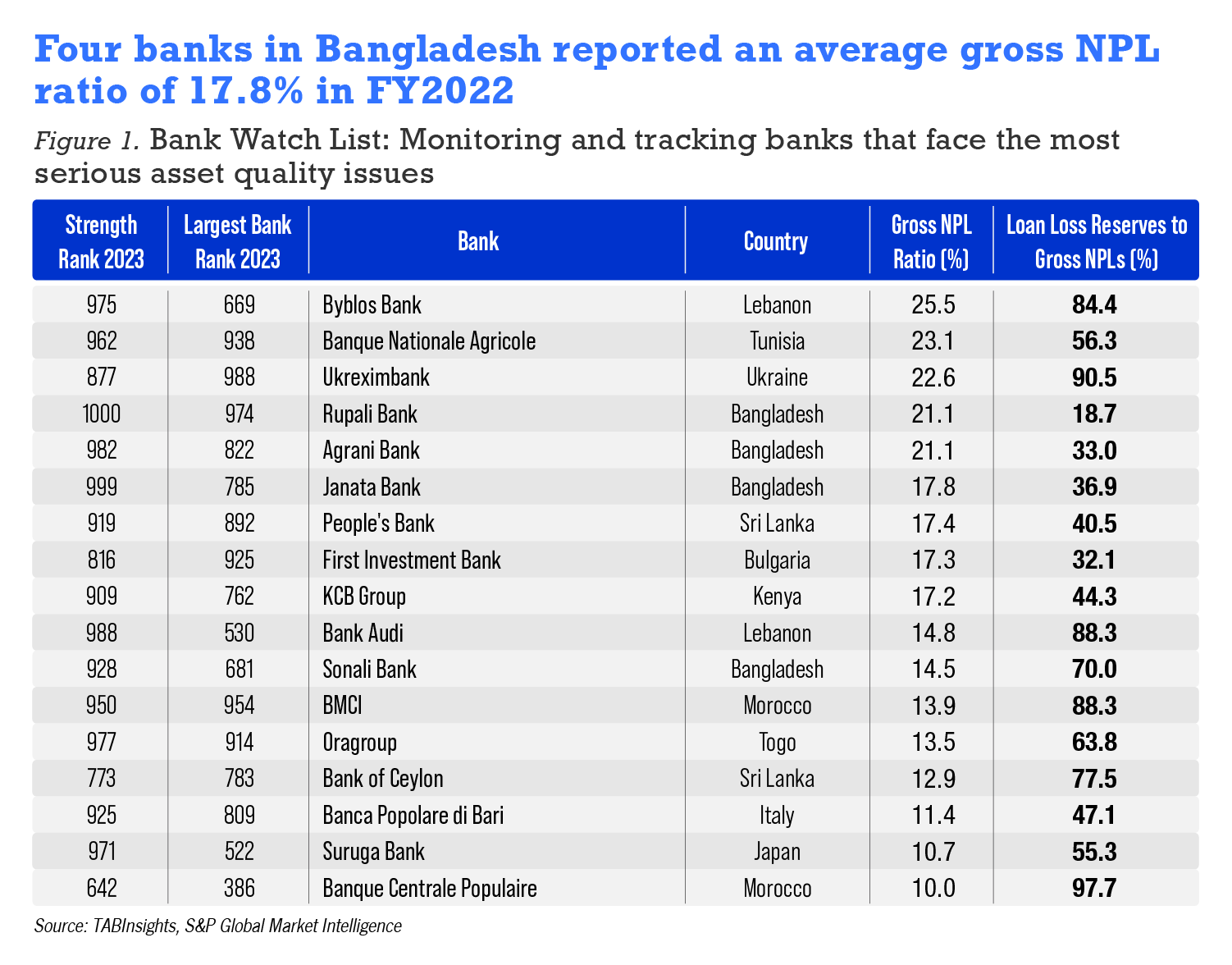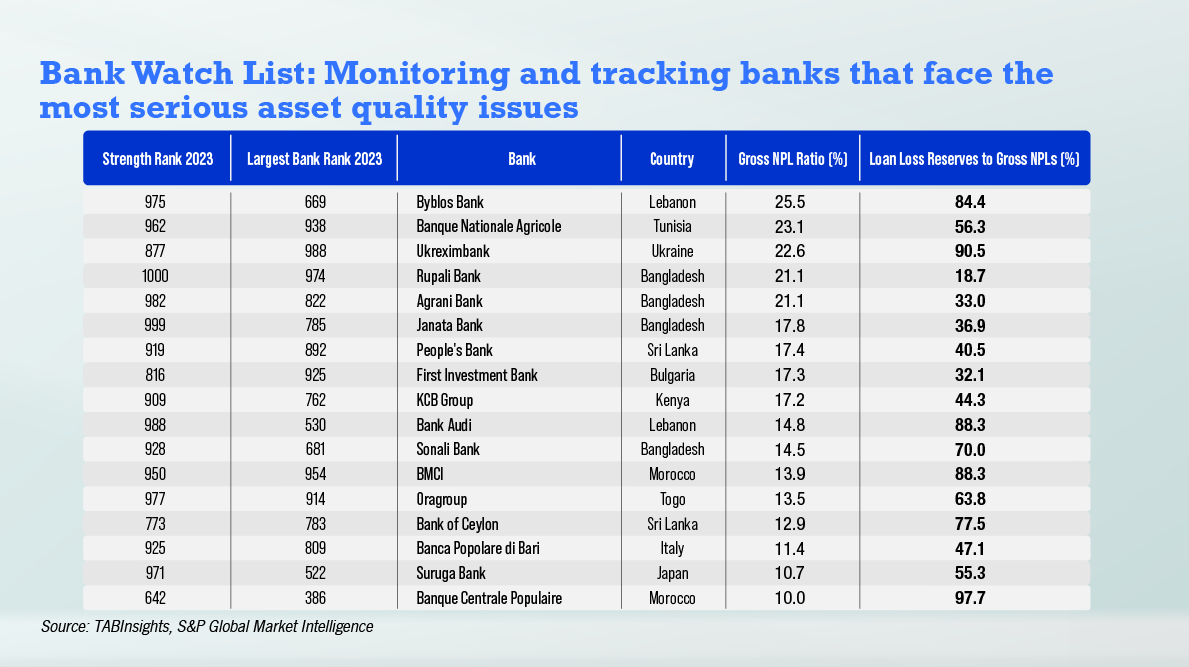While the overall asset quality of banks worldwide showed slight improvement, countries such as Lebanon and Bangladesh continue to face serious asset quality issues. Among the seven Bangladeshi banks in this year’s TAB Global Strongest Banks ranking, four are on the TABInsights Bank Watch List. The Bank Watch List identifies banks susceptible to macroeconomic and business condition fluctuations, offering a holistic assessment of financial strength.
The four Bangladesh banks had a weighted average gross non-performing loan (NPL) ratio of 17.8% in FY2022, up from 17.1% in FY2021. Meanwhile, average loan loss reserves (LLRs)-to-gross NPLs ratio declined from 48.7% to 45.4%. The gross NPL ratio for Rupali Bank and Agrani Bank in Bangladesh, as well as Byblos Bank and BLOM Bank in Lebanon, exceeded 20%. In FY2022, the asset quality of all Lebanese banks experienced a decline, except for the Bank of Beirut that did not provide information on its ratios for that year.
Banque Nationale Agricole in Tunisia, Ukreximbank, and PrivatBank in Ukraine, as well as Banco BAI in Angola, all reported gross NPL ratios exceeding 20%. However, PrivatBank and Banco BAI had loan LLR-to-gross NPL ratios surpassing 100%. On the other hand, Rupali Bank, Commercial Bank International, First Investment Bank, Agrani Bank, and Janata Bank all had LLR-to-gross NPL ratios below 40%.
Conversely, this year’s list does not include any Indian banks, highlighting their consistent improvement in asset quality. The average gross NPL ratio for the 30 Indian banks in the ranking improved to 3.9% in FY2022, down from 6.0% in the previous year. IDBI Bank had the highest gross NPL ratio in India, with the ratio declining from 20.2% in FY2021 to 6.4% in FY2022. Also excluded from the list were the National Bank of Pakistan, Pakistan-based United Bank, Philippine National Bank, and East West Banking Corporation. Despite the National Bank of Pakistan maintaining a relatively high gross NPL ratio at 14.3%, its LLR-to-gross NPL ratio improved to 101%.

On 2013, TABInsights, the research arm of The Asian Banker, redefined its strongest-banks evaluation with the introduction of the Bank Watch List, aimed at providing a more holistic assessment beyond just the balance sheet.
What is the Bank Watch List?
It identifies and considers the impact of specific evaluation parameters on balance sheet strengths as macroeconomic and business conditions change. By identifying the parameters and institutions that are most likely to be impacted by such changes, TABInsights aims for a more holistic scorecard. The identification and setting of the parameters are based on analysis of past performance as well as the outlook of the banking sector in the region.
Who are on the Bank Watch List?
This year’s Bank Watch List includes four banks from Bangladesh, three from Lebanon, two from Morocco, two from Sri Lanka, and one each from Bulgaria, Italy, Japan, Kenya, Togo, Tunisia, and Ukraine. This year’s rankings expanded to encompass the world’s 1,000 largest and strongest banks, leading to the inclusion of banks from more countries on the list.
What does it mean to be on the Bank Watch List?
In this year’s ranking, we identified gross NPL ratio (above 10%) and LLR-to-gross NPL ratio (below 100%) as parameters that will impact financial strength due to fluctuations in macroeconomic and business conditions. The Bank Watch List is a tool to monitor and review parameters for a holistic view of financial strengths of the institutions being evaluated. This first iteration the Bank Watch List will be a powerful tool for the industry to benchmark against and monitor the financial strength of banks.
To view the full list of the Strongest Bank: https://tabinsights.com/ab1000/strongest-banks-in-the-world

































